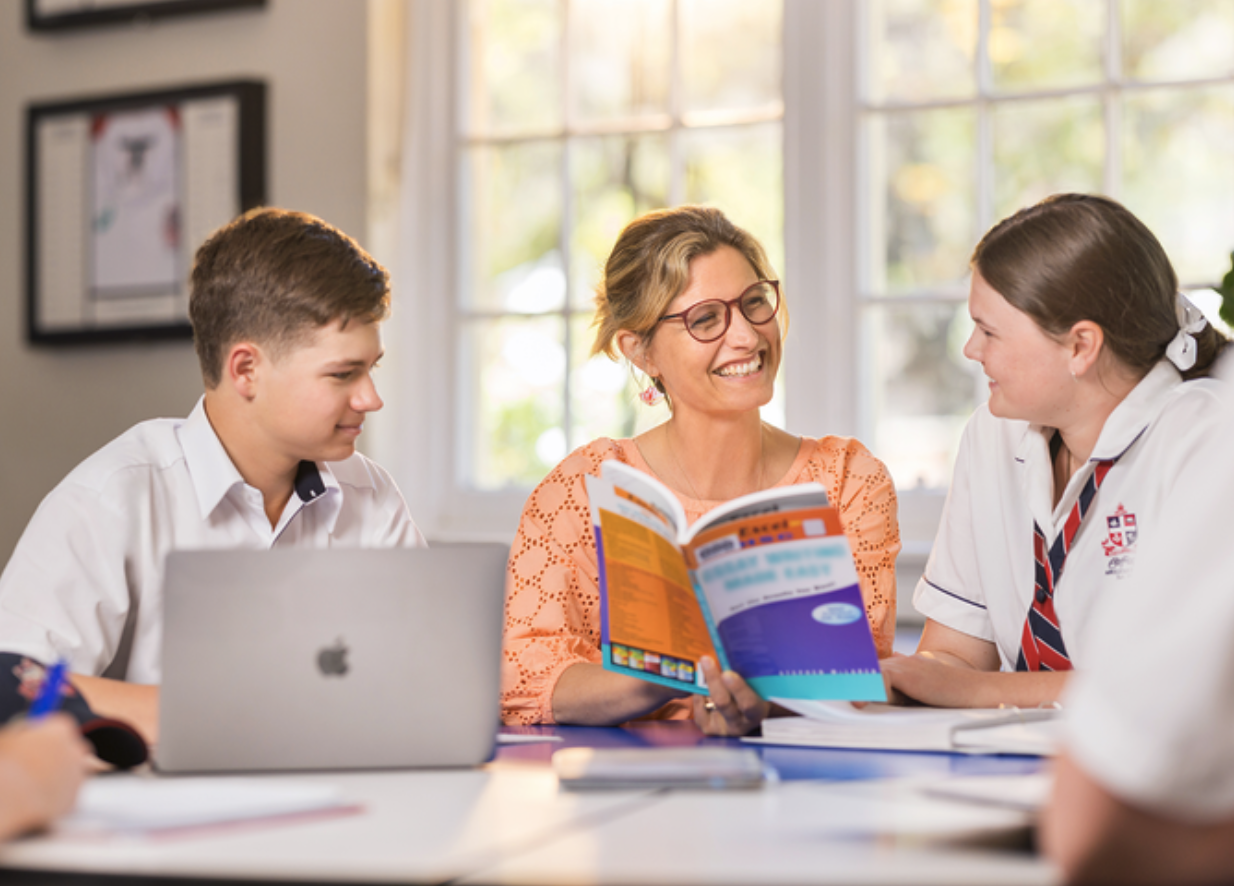Latest News

Language inspiring a love for culture and communication
This year Calrossy Junior School has expanded its commitment to language and cultural education, providing students from Prep to Year 6 with inspiring opportunities to engage in weekly lessons in either Japanese or Spanish. Our dynamic and immersive program is designed to spark creativity, empathy, and cognitive growth, offering students a unique insight into the richness of diverse cultures and languages.
Spanish teacher, Jade Taylor, shares her passion for bringing the Spanish-speaking world to life in the classroom.
“I love immersing students into the Spanish language and culture,” she says. “With more than 22 countries speaking Spanish as their first language across different continents, there are literally endless cultural lessons to explore.”

Currently at Calrossy, Infants students are exploring Japanese and Primary students are diving into Spanish in weekly lessons. The Japanese and Spanish programs go beyond traditional language lessons, giving students hands-on experiences that make learning memorable. The lessons range from playful, culture-centred activities like cooking traditional dishes to meaningful connections with students from Spanish- and Japanese-speaking countries, exploring traditions, and conducting research that deepens their understanding of the language and its cultural roots.
“The students enjoy learning about the variety of foods, dances, and traditions,” Taylor explains.
“We speak as much Spanish as possible, and we’ve done a fair bit of dancing, cooking, and art from Central and South America. They loved making Aztec hot chocolate, trying Venezuelan-style fried plantains, and baking Argentinian caramel cookies. It’s been incredibly rewarding to see their confidence grow.”
This Christmas, the students are particularly excited to send a special card to their sponsor child, Andres, who lives in Colombia.
“I hope these experiences not only build their language skills but also help them feel connected to the wider world,” Mrs Taylor adds.
Calrossy students are developing both linguistic skills and a deeper appreciation for cultural diversity, laying a foundation for lifelong learning and global citizenship.

A Foundation for Lifelong Learning
Research highlights the profound impact of learning a second language at a young age, suggesting that it improves literacy, strengthens cognitive concentration, and instills an appreciation for different cultures (Guardian Childcare & Education).
For our students, engaging with Japanese and Spanish enhances critical thinking as they navigate new language structures and expressions, enriching their ability to process information and see the world from varied perspectives. As Monash University notes, bilingual education boosts problem-solving skills, memory, and attention to detail, all of which support academic performance across subjects.
Calrossy’s language program introduces students to the unique sounds and sentence structures of Japanese and Spanish, encouraging mental agility and imaginative thinking. When students interpret meaning in a different language, they sharpen their listening skills and develop stronger memory retention, which positively impacts their overall learning experience.
Cultural Awareness and Global Citizenship
Through Japanese and Spanish, Calrossy students gain a window into new worlds, learning about the customs, traditions, and daily lives of people from different backgrounds. This exposure nurtures open-mindedness, empathy, and respect—qualities essential for engaging thoughtfully and confidently in a multicultural society. According to the Victorian Department of Education, language learning fosters cultural competence, helping students to value diversity and respect others’ perspectives.
Spanish teacher Jade Taylor sees firsthand how cultural exposure enhances her students' enthusiasm. “I love immersing students into the Spanish language and culture,” Mrs Taylor shares.
Supporting Cognitive Development and Cultural Literacy
The NSW Department of Education endorses bilingual education for its role in cognitive and cultural development, promoting language programs that connect young learners to their heritage and strengthen community cohesion. Models like Content and Language Integrated Learning (CLIL) enable students to apply their language skills in real-life contexts, enriching their understanding and enhancing engagement.
At Calrossy, we believe in the power of language education to open doors, building a solid foundation for lifelong curiosity, empathy, and resilience. As our students explore new ways of thinking and communicating, they develop into well-rounded global citizens, equipped to thrive in an interconnected world.
How Families Can Support Language Learning at Home
Families can extend language learning at home with simple, enjoyable activities, enhancing their child's immersion and confidence:
Do it Together : Practice with your child by learning basic phrases together. This shared experience reinforces learning and makes it fun.
Get Creative : Engage in language-based games, read books in Japanese or Spanish, and cook traditional dishes. Immersive activities create natural connections to language.
Sing Along : Songs in another language are a delightful way to memorise vocabulary and sentence structure.
More handy tips for supporting your student at home and the benefits of language learning can be found at visit Guardian Childcare & Education’s resource on language education .









